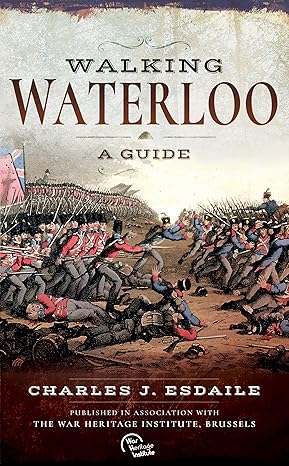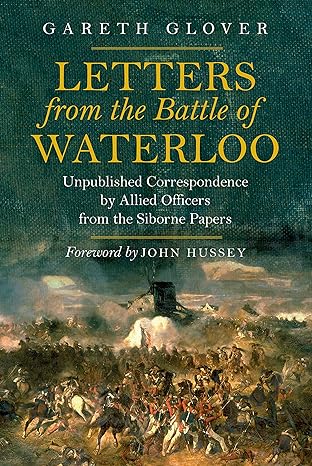Woman, Man the Cannon! - Margaret Cochran Corbin
By Walt Giersbach
Now that we're all focused on women's place in a "man's world," let's take a moment to remember Margaret Cochran Corbin, one heroic lady. Earning later honors, however, came as a result of seeing her husband killed before her eyes, taking his place at his field gun defending General Washington retreat from Manhattan, and having her body blasted into permanent disability.
Historian Dr. Debra Michals called Corbin a hero of the American Revolution who became the first woman to receive a military pension. "The hardships of Corbin's young life inspired the courage and resilience that would serve her well during the Revolution." [1]
Margaret was born on Nov. 12, 1751, near Chambersburg, Pa., a small town west of Harrisburg. Five years later Margaret and her older brother were visiting their uncle when Indians attacked her parents' homestead. Their father was killed and their mother captured, never to return. The children were then raised by their uncle. In 1772, Margaret Cochran married John Corbin, a Virginia farmer.
When the Revolutionary War began, John joined the First Company of Pennsylvania Artillery as a matross, one of the members of a cannon crew. A matross was a soldier of artillery, who ranked next below a gunner. A matross's duty was to help the gunners load, fire and sponge the guns. They were provided with firelocks, and marched with the store-wagons, acting as guards. In the United States Army, a matross ranked as a private of artillery.
As was common at the time, 25-year-old Margaret accompanied John during his enlistment. Wives of the soldiers often cooked for the men, washed their laundry and nursed wounded fighters. They also watched the men practicing their drills. No doubt, they learned those drills, too. For this, she received half rations. She acquired the nickname "Molly Pitcher" (as did many other women serving in the war) by bringing water during fighting, both for thirsty soldiers and to cool overheated cannons.
In the days leading up to the battle at Fort Washington, General Washington reconnoitered to see if the site could be defended. The battle of Nov. 17 is covered in The Campaign of 1776, Memoir of the Long Island Historical Society, vol III, 1878. [3] This is a minute-by-minute account of the battle. Note: click on the page number on this footnote to expand the account.
Interestingly, regiments that drew on European immigrants often brought or attracted a number of women camp followers. Historian Tim Abbott states, "The German Regiment, raised from among German-speaking communities in Pennsylvania and Maryland, listed more than a dozen women drawing rations at the outset of Sullivan's 1779 expedition against the Iroquois. At winter quarters during 1778-1779, it is estimated that the 22 companies of Major General [Henry] Knox's Continental Artillery had an average of three women camp followers per company." Major-General Knox was Washington's Chief of Artillery. [4]
On November 16, 1776, John Corbin's company was stationed at Fort Washington — now Fort Tryon Park — in upper Manhattan.. The Pennsylvania Artillery was charged with protecting the rear of Gen. Washington's army in their retreat to White Plains. On that date, 4,000 British soldiers and Hessian mercenaries attacked the outnumbered Maryland and Virginia rearguard. Corbin's artillery was ordered to hold off the attackers with what few cannons they had. Margaret had dressed as a man and joined her husband on the field of fire.
During that four-hour battle, every soldier manned the cannon and muskets. John Corbin was assisting a gunner until the gunner was killed. John took charge of the cannon and Margaret jumped in to help him. Tragically, John was immediately killed at his station when a Hessian musket ball found its mark.
Margaret immediately continued loading and firing the cannon by herself. Other soldiers later commented on "Captain Molly's" steady aim and sure-shot. Her accuracy drew the attention of the 10 Hessian field cannons and the gunners trained their fire on her. She continued to fire, however, until she was hit by grapeshot. The shot tore her shoulder, almost severing her left arm, mangled her chest and lacerated her jaw. Other soldiers moved her to the rear where she received medical care.
By the battle's end, all of Long Island and New York City had fallen to the British. Two hundred and fifteen artillery pieces were captured and 329 officers and 4,100 soldiers were prisoners, Six hundred were killed or wounded. The enemy suffered more heavily, except for the prisoners and armor. [5]
The British had captured Fort Washington, taking out the last Revolutionary position in New York City. The wounded American soldiers, including Margaret Corbin, were paroled and ferried across the Hudson River to Fort Lee, N.J. Margaret was then transported further in a jolting wagon all the way to an army hospital in Philadelphia — a distance of some 90 miles.
Margaret never fully recovered, and was unable to use her left arm for the rest of her life. On June 26, 1776, the state of Pennsylvania gave Margaret $30.00 due to her disability. Three years later, she was awarded a lifetime disability pension of one-half pay from the Continental
Congress — the first woman to obtain such a commitment from the government. [6]
In the war's aftermath, Corbin was left to support herself. She struggled financially. She joined the Invalid Regiment at West Point, aiding the wounded until she was formally discharged. Then, on July 6, 1779, the Continental Congress awarded her a lifetime pension equivalent to "half the pay and allowances of a soldier in service." Congress also gave her a "suit of clothes" to replace the ones ruined during the battle." (Note that she dressed as a man for the battle, and it's not known what type of clothing she was given. Also curious is the speed at which the fledgling government acted.)
Gen. Henry Knox was with Washington's Army outside Philadelphia, where Margaret Corbin was recovering from her wounds. He also commanded at West Point near the end of the war, where Margaret Corbin and the Invalid Corps were garrisoned. [7]
She was enrolled in the Corps of Invalids, created by Congress for wounded soldiers, and continued to be included on muster lists until the end of the war in 1783. For the next 20 years, she lived in the West Point, N.Y, area.
In 1782, Corbin married a wounded veteran whose name I've been unable to find, but he died a year later. Gruff and unfeminine, Corbin made few friends among the women of her time. She seemed to feel more at home smoking, drinking and conversing with other soldiers. Ccorrespondence between Gen, Knox and Quartermaster William Price between 1782 and 1790 indicated that Margaret needed special care, being unable to bathe and dress herself.
Corbin died near West Point at the age of 48. In 1926, her remains were moved from an obscure grave on the Hudson River to West Point, where she was buried with full military honors. A plaque at Fort Tryon Park in Manhattan hails her "as the first woman to take a soldier's part in the War for Liberty." [8]
A Distaff View of Corbin Tim Abbott, historian and blogger (at https://greensleeves.typepad.com/berkshires/margaret-corbin/) raises some questions about this wartime drama. He states that Margaret has been frequently confused with the woman associated with legendary Molly Pitcher. He writes, "Pitcher was also associated with Proctor's Artillery and is said to have swabbed the guns at Monmouth. Very possibly the idea that Margaret Corbin's artilleryman husband was part of this unit stems from the same confusion."
Further, he notes, "Congress acted with atypical alacrity to relieve her ‘deplorable situation' and heeded the recommendation of the Pennsylvania authorities that she be provided for, and that raises questions about how a crippled camp follower of frontier background got their bureaucratic attention."
Revolutionary War records can be notoriously incomplete, and stories often grow in the telling. The case of Margaret Corbin is no exception. [9]
Tim Abbot writes. "The evidence behind the identification of [Corbin's] original grave site and her exhumation for reburial at West Point… involves the rediscovery of her story following the Centennial of the Revolution, and in particular the interest of the Daughters of the American Revolution. The D.A.R…found an ideal heroine in Margaret Corbin. In 1900, the Margaret Corbin Chapter, D.A.R. of Chelsea, Mass. received its charter."
He continues, "In her final years, the disabled Corbin appears to have become obnoxious to society. After her wounding and evacuation from Fort Washington in 1776, she was transported to Pennsylvania. Sometime after that, while her supporters petitioned the Commonwealth and Congress for her relief, she was enrolled in the Pennsylvania Invalid Corps as a private soldier, mustering out with her regiment at West Point in 1783. Margaret Corbin appears to have remained in the Hudson Highlands thereafter, and the commander of West Point corresponded with then Secretary of War Henry Knox throughout the 1780s concerning her condition while she was in the care of a Mrs. Randall in what is now Highland Falls, N.Y.. In 1795, he wrote to Knox ‘I am at a loss what to do with Capt. Molly. She is such an offensive person that people are unwilling to take her in charge.'" [10]
Post Script
Major Edward C. Boynton's text is available online and reveals more about Margaret Corbin's reduced condition after the war and the interest taken in her welfare by powerful men, including the former chief of the Continental Artillery and now Secretary of War, Major General Henry Knox. [11],
Abbot believes Boynton confuses "Captain Molly" Corbin, the pensioner at West Point, with Molly Pitcher of Monmouth. He reproduces several letters from Major George Fleming, commander at West Point where the remnant of the revolutionary army was garrisoned after the war to Henry Knox, in whose regiment Fleming had served. Knox evidently knew the subject of these letters well enough so that the name "Captain Molly" was sufficient to identify her. This indicates either a degree of minor celebrity to a wounded woman warrior or personal familiarity with her case.
It seems remarkable that the Secretary of War would be asked to provide Corbin with undergarments, but two of the three letters reproduced by Boynton address her "want of shifts" and requests that three or four be made for her. Boynton then writes: "Molly is described as usually appearing with an artilleryman's coat over her skirts. She was brusque, coarse, red-haired, wholly wanting in feminine charms, and one of her biographers has recorded that she made use of swear words." [12]
Abbot states, "I do not believe there was an improper relationship between the commander and camp follower. I believe he was her patron, however. I believe he listened to his officers who told him that a woman of the artillery had fought and bled in her husband's place and that he had the political clout and position to ensure that she received relief from those in authority. I believe that without a fallen husband, she would have been deprived of the honorable widowhood that bolstered her case and kept her from being considered a fallen woman. And I believe Henry Knox cared enough about her case after the war that he would have tried to get her the underclothes and other thongs she required as her health declined."
History may dim the details of such actions as reported here. However, there is little doubt that Margaret Cochran Corbin gave her all for a cause that grows more important with time. If it were not for Corbin, or all the other "Molly Pitchers," who would have become the winner and where would our nation be today?

Margaret Corbin in a sketch by Herbert Knotel, West Point Museum Art Collection, United States Military Academy 
Monument to Margaret Corbin US Military Academy Cemetery, West Point, NY. |
| * * * |
Show Notes
| * * * |
© 2025 Walt F. Giersbach
Written by Walter Giersbach.
About the Author:
Walter Giersbach’s fiction has appeared in a score of online and print publications. He also writes extensively on American history, with 10 pieces published in Military History Online. Two volumes of short stories, Cruising the Green of Second Avenue, published by Wild Child (www.wildchildpublishing.com) were available from online retailers until his publisher ceased operations. He served for three decades as director of communications for Fortune 500 companies, helped publicize the Connecticut Film Festival, managed publicity and programs for Western Connecticut State University’s Haas Library, and moderates a writing group in New Jersey.
* Views expressed by contributors are their own and do not necessarily represent those of MilitaryHistoryOnline.com.





